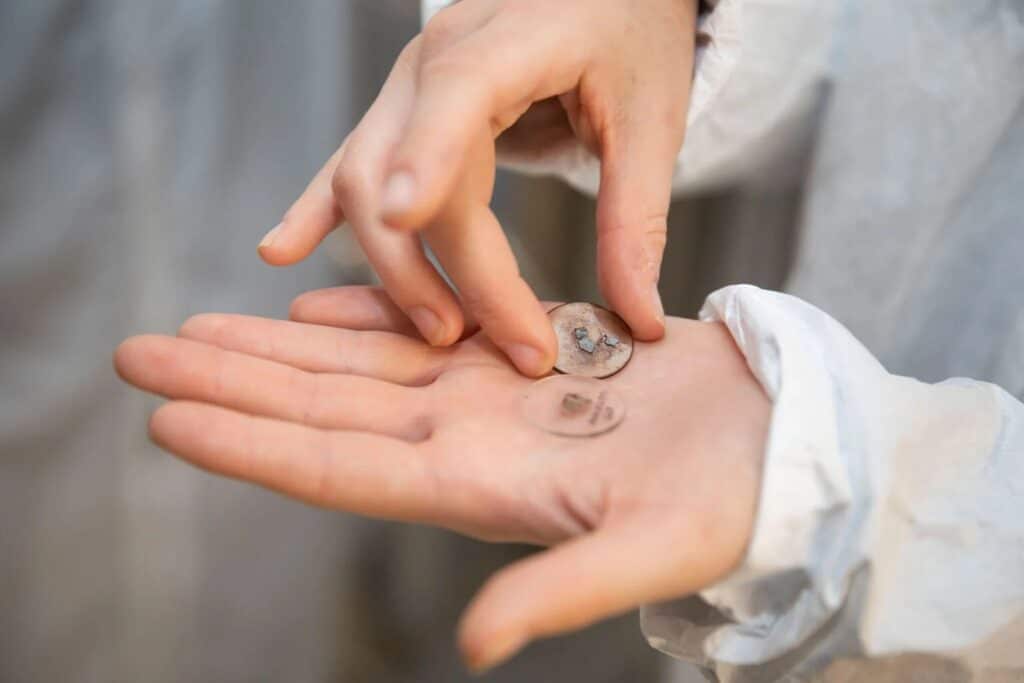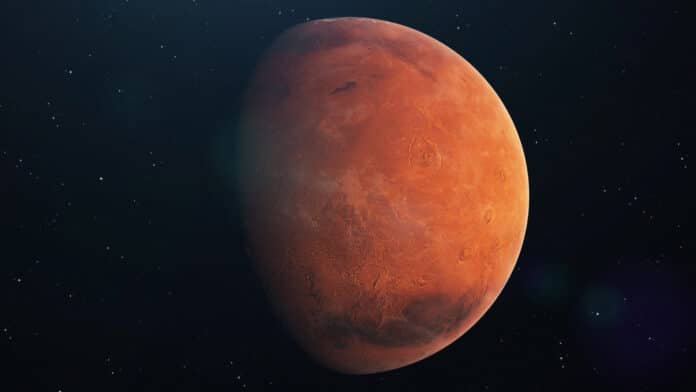Mars doesn’t now have a core dynamo, but the strong crustal magnetic fields connected to many of its ancient terrains suggest that there once did. However, the high altitude and low spatial resolution of the available measurements, the imprecise dating of surface features, and the poorly defined magnetic source regions have made it difficult to derive precise information about that dynamo’s history from orbital measurements of crustal fields. As a result, there are still questions about a number of crucial dynamo features.
According to a recent study, the Red Planet may have had liquid water on its surface for longer than previously thought.
A closer look at a previously researched Martian meteorite reveals the potential foundations of such an intriguing hypothesis. According to new research, Mars had a magnetic field similar to Earth’s for hundreds of millions of years longer than previously thought. Such a field can divert dangerous cosmic rays, opening the door to the existence of an atmosphere and everything it entails.
Scientists looked for records of the planet’s magnetic field, representing evidence of an early martian dynamo. The dynamo describes how the liquid in the planet’s core moves to make strong magnetic fields around the planet.
Sarah Steele, a third-year graduate student in Earth and planetary sciences, said, “If the dynamo was longer-lived on Mars and played the same role, that may have helped keep the surface habitable longer. But on the other hand, the magnetic fields around Mars could have functioned differently — maybe they even helped the atmosphere escape to space.”
Using an innovative new quantum magnetic field microscope, scientists identified where the planet lost 3.9 billion years ago or later.
Steele said, “Those sound very close together of the dates. But a giant chunk of the stuff we are interested in, such as the questions about water, is in that window.”
Professor Roger Fu, John L. Loeb Associate Professor of the Natural Sciences, said, “This showed that the commonly accepted timeline for the Mars magnetic field can’t be correct. It likely lasted at least 200 million years and probably even longer.”
The Allan Hills 84001 meteorite was recovered from Antarctica in 1984, and its samples were studied using a cutting-edge quantum diamond microscope at Fu’s lab. This incredibly sensitive technique demonstrated that the meteorite’s iron-sulfide minerals were strongly magnetized in many orientations billions of years ago when Mars was still the meteorite’s original location. These minerals were responding to Mars’ magnetic field, much like a compass is drawn to the magnetism of the planet’s North Pole.
Fu said, “These findings build on data gleaned by NASA’s Mars Atmosphere and Volatile Evolution (MAVEN) mission, which orbited the planet beginning in 2014 and, among other research, worked to interpret remaining magnetic signals emanating from the crust.”
The data from Steele and Fu’s team also reveal that Mars’ magnetic field likely reversed at times, much like Earth’s.

Steele said, “While these reversals are not understood, they may ultimately offer clues about Mars’ core. In the last few years, we’ve gotten better estimates of the core’s size and found out that it is mostly, or possibly entirely, liquid. Mars might have a solid inner core, but if it does, it’s very small.”
“By contrast, Earth has a solid inner core and a liquid outer core. “That tells us that some of the chemistry in Mars’ deep interior is pretty different from what it is on Earth, which has broader implications for how the planet was formed.”
Steele said, “If the magnetic field on Mars was similar to Earth’s, then perhaps it also did a good job of shielding Mars from this energetic solar wind. Then, when the dynamo shut down, that could have been what caused Mars to lose its atmosphere. From that point, the atmosphere could have rapidly eroded… And that then leads to the end of water — or liquid water — on Mars’s surface.”
“There are counterarguments, including the suggestion that the magnetic field could have accelerated atmospheric escape, “so a longer-lived dynamo might have even helped Mars lose its water. That would be interesting since we’re still not sure how Mars lost so much of its water and atmosphere so quickly.”
Journal Reference:
- Sarah Stelle, Roger Fu et al. Paleomagnetic evidence for a long-lived, potentially reversing martian dynamo at ~3.9 Ga. Science Advances. DOI: 10.1126/sciadv.ade9071
